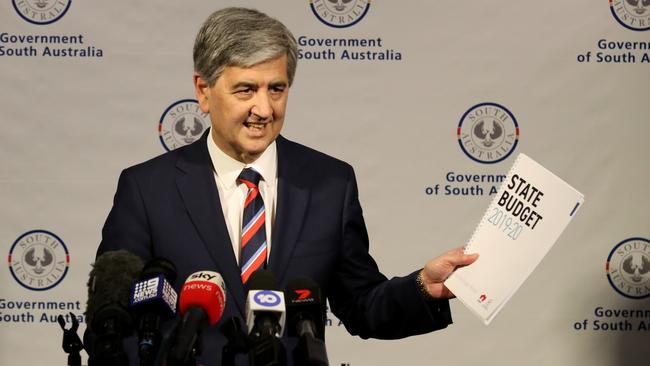Analysis: South Australia changed forever in coronavirus Budget spending splurge, writes Paul Starick
The most significant Budget in South Australia’s history will change the state’s lifestyle and economy forever, writes Paul Starick.

Opinion
Don't miss out on the headlines from Opinion. Followed categories will be added to My News.
South Australia’s lifestyle and economy will be transformed forever in this history-making Budget that aims to stave off an economic apocalypse.
The $8.9 billion North South Corridor upgrade, to be completed by 2030, will fundamentally change Adelaide by reshaping transport networks and the businesses that spring up around them. Swathes of suburbs now plagued with traffic congestion and noise will be preserved. Northern and southern metropolitan fringes will be opened up, just as the Heysen Tunnels unleashed Mt Barker’s rapid growth.
It is an epic project, a version of which was first proposed way back in 1968 with the defunct Metropolitan Adelaide Transport Study, known as the MATS Plan.
It is billed as the biggest employment-creating infrastructure project in SA’s history, delivering up to 4000 jobs.
Delivered during a pandemic-induced global economic shock, this is the most significant State Budget in decades, arguably in SA’s history. Treasurer Rob Lucas, elected in 1982, argues the numbers are more eye-watering than after the 1991 State Bank financial disaster or the 2008 Global Financial Crisis.
A $4 billion economic stimulus package and record infrastructure program means state debt will almost double to $33.17 billion by 2023-24. The State Bank collapse – in a different era with vastly higher interest rates – cost SA $3.1bn.
For a state set back for a generation by the Bank financial disaster, this represents a major leap of faith. But it is underpinned by advice to National Cabinet from Reserve Bank of Australia governor Philip Lowe and federal Treasury secretary Steven Kennedy. They have both argued that state and federal governments must capitalise on historically low interest rates to invest in job-creating infrastructure.
“Now I know the joys of retail therapy that other people have talked about,” Mr Lucas quipped, when explaining why his 40-year political career, marked by frugality, would end with a Budget binge that he had no alternative but to unleash.
In the past 16 months, SA has borrowed $6.6bn, at an average rate of 1.3 per cent. Bizarrely, this low rate means the interest bill in 2022/23 will be $200m lower than predicted last year.
In household terms, Mr Lucas is borrowing to upgrade the home while mortgage costs are at historic lows.
There is some degree of risk. The Budget assumptions, taken from federal projections, rely on a population-wide COVID-19 vaccine being delivered by the end of next year. A second virus wave would be economically catastrophic.
SA, however, has several advantages over other states, not least the $90 billion in naval shipbuilding projects centred on Adelaide. Thousands of jobs are expected to flow within the next two to five years from the $35bn project to build nine frigates and the $50bn program to build 12 submarines.
This means Mr Lucas can bank on a federally funded stimulus of at leat $90 billion that other states cannot.
It enables him to focus the record $4bn stimulus package on projects that can be completed or significantly completed within two years.
Importantly, money spent swiftly will sustain and create jobs when they are most needed, as federal government support wanes from early next year. For example, $37 million is allocated for grants of between $20,000 and $100,000 to government schools for priority maintenance work in the next school year.
The pre-pandemic plan for an inner-city sports and entertainment arena has been ditched. Mr Lucas said the clear message was people welcomed past investments, such as the $535 million Adelaide Oval upgrade, but wanted “a focus on community and state-level facilities”.
This means four new grandstands will be created as part of a $44 million Memorial Drive Tennis Centre upgrade, for example.
In summary, this Budget demonstrates yet again that the pandemic’s economic impact will be felt for many years, for better or worse, for richer or poorer.


